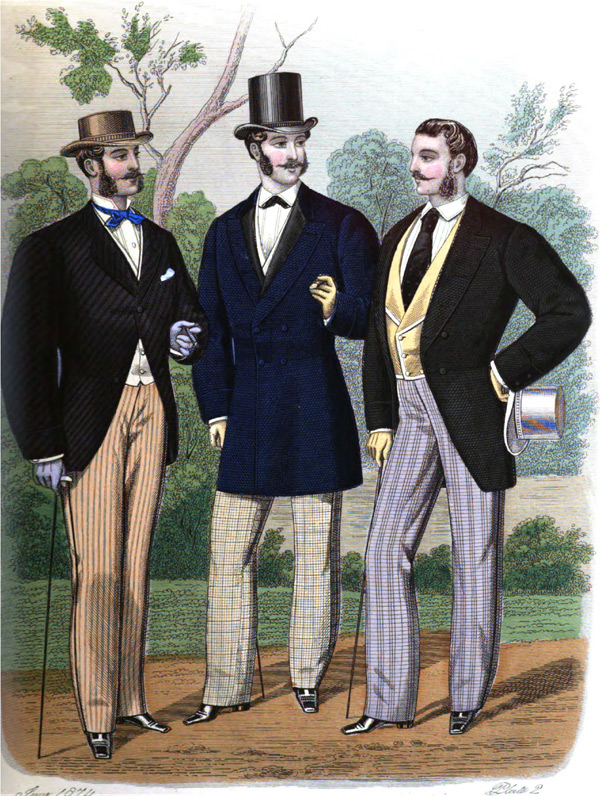Prices and Availability Subject to Change. Please call 800-997-4311 for more Information.
1840s Men's Clothing Guide
When Queen Victoria took the throne in 1837, her more conservative tastes transformed the cultural landscape—on both sides of the Atlantic. Gone were the Romantic ideals of extravagant self-expression, replaced instead by a focus on religious and moral values, piety, and decorum. These "Victorian values" would come to define the period's style and social norms.
After Queen Victoria's marriage to Prince Albert in 1840, he naturally became a style leader. Under their influence, men's fashion changed dramatically. Padded chests, swishing coat skirts, and corseted waists gave way to straighter, simpler silhouettes. Waistlines dropped, collars became smaller, and sleeves fit more smoothly into the armhole. Coats no longer flared as much at the waist, reflecting a sense of refined restraint.
Industrialization also played a major part in shaping men's clothing. Factories began mass-producing garments by hand, and once sewing machines arrived in the late 1840s, ready-to-wear clothing became both accessible and affordable. While the taste for showy, youthful attire faded, middle-aged captains of industry gained prominence as figures worth emulating.
The 1840s mark the beginning of America's embrace of Manifest Destiny, that the country was destined to stretch from coast to coast. Thousands of travelers embarked on the journey west, following the Oregon Trail and California trail to find a better life. The discovery of gold at Sutter's Mill in 1849 sparked the gold rush and changed America forever.
In 1839, Louis Daguerre introduced his photographic invention, making it possible for a broader range of people to have their likeness preserved. Although most early photographs were taken in studios where subjects wore their finest clothes or military uniforms, these images nonetheless give us a fascinating glimpse into what people wore beyond royalty and the nobility.
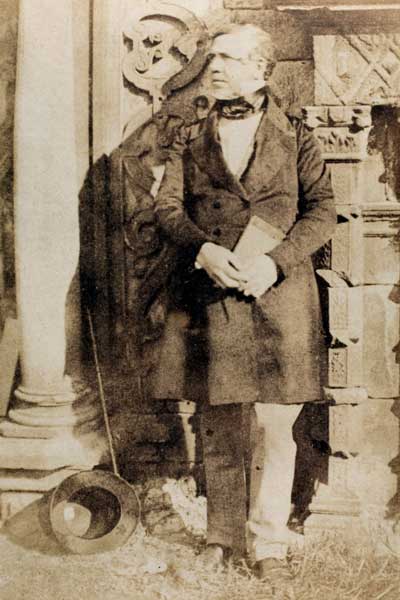
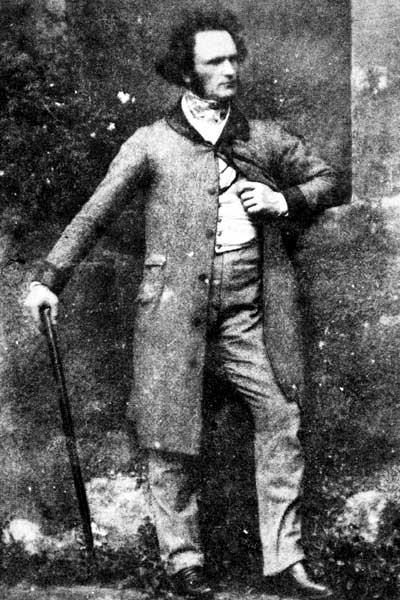

Coats
It was in the 1840s that the frock coat replaced the tailcoat as standard daytime dress for men. Originating in military costume of the Napoleonic wars several decades earlier, the frock coat is characterized by its waist seam and knee length skirt. The 1840s version had a much straighter silhouette than in earlier decades, with most of the volume removed; the lower portion did not flare out nearly as much, the collar not as tall or rounded, and sleeves were narrow, fitting smoothly into the armhole. Single or double-breasted, the frock coat could be worn buttoned up or open to show the vest beneath.
The riding coat or Newmarket was another option for daytime, constructed like a tailcoat but without the front cutout and with the opening sloping gently down to the hem. The Newmarket could be worn for riding or morning walks - hence becoming known as the "morning coat", which would become very popular in the late Victorian and Edwardian eras.
tailcoats were now worn primarily for evening wear or full day dress. Usually single breasted, they were designed to always be worn open to display the waistcoat.
Appearing in the 1840s, the sack coat was the newest addition to a man's wardrobe. Worn for casual occasions, the sack coat had no waist seam, finished at the hips, and was in this period generally unlined. They were therefore much cheaper and easier to make, and could be readily mass-produced, fuelling their popularity so that by the end of the decade the sack coat had become standard working man's wear.
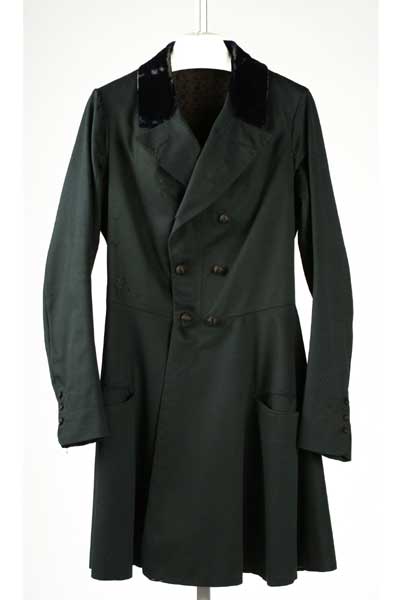

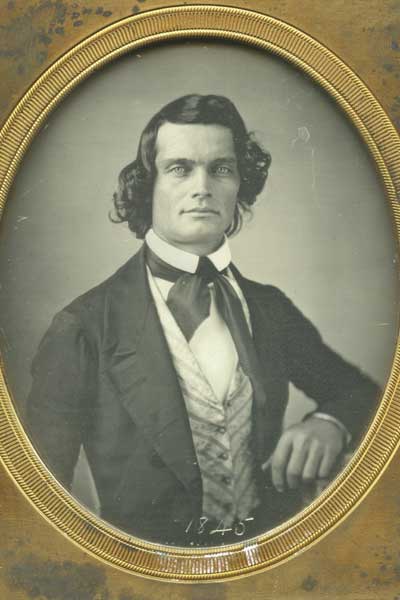
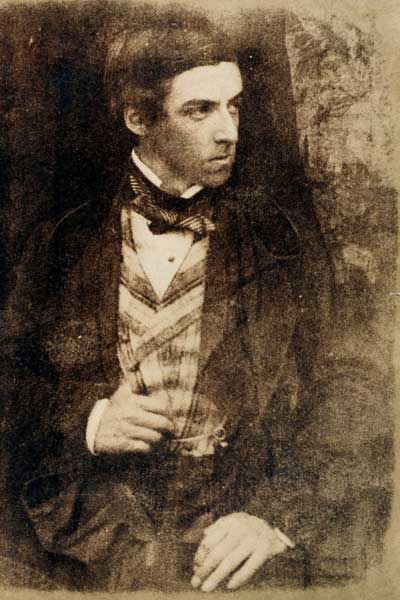
Vests
Given the sobriety of most other garments in the wardrobe of the 1840s man, the waistcoat was the one area which could be decorative. Vibrant colors and patterns in luxurious fabrics were favored, with stripes, checked and floral "sprigged" patterns were all seen.
The shawl collar of the 1830s remained, as did the deep-V neckline, although with the changing silhouette the vest became longer in the body toward the end of the decade. The lower hem could be cut straight across or slope to points at the center front.
Shirts
Shirts in this decade were almost always white, and cut narrowly with set-in sleeves to be worn under the slim fitting coats. The shirt front could be pleated or tucked, but the Romantic frills and ruffles were no longer in fashion.
Shirts were generally made with detachable collars, which could be washed and starched separately from the shirt. These were not nearly as tall as in the previous three decades, reaching to perhaps two-thirds the way up the neck - and could be worn straight or with a narrow turn down.
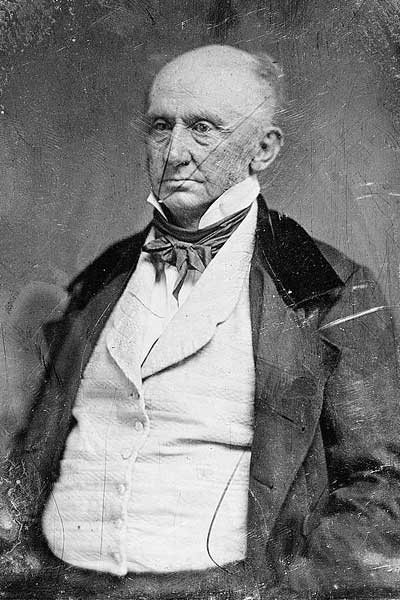

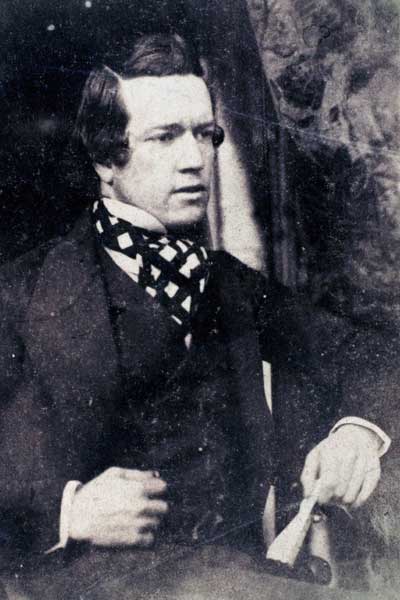
Ties
Neckwear of the 1840s was still fairly large and elaborate by contemporary standards, but becoming less so. The black silk or velvet stock, as popularized by King George in the 1820s, was common. This consisted of a shaped band of horsehair or buckram, or a wire frame, which was covered in fabric with a horizontal bow tied on top. Stocks in white were worn for evening dress.
Cravats can be seen in many colors and patterns in both the fashion plates and daguerreotypes, sometimes tied to resemble the stocks with a small horizontal bow in front, sometimes worn full and flowing down the shirt front, held in place by a decorative pin.
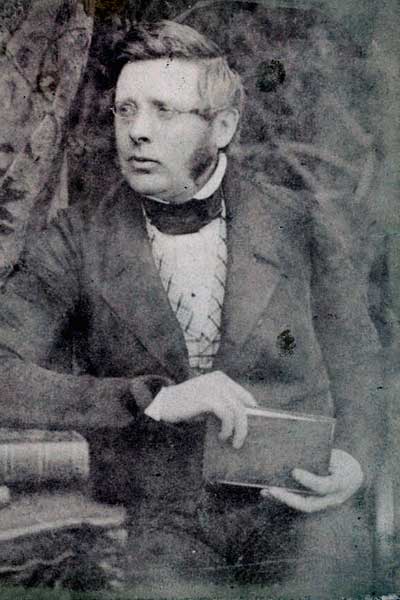
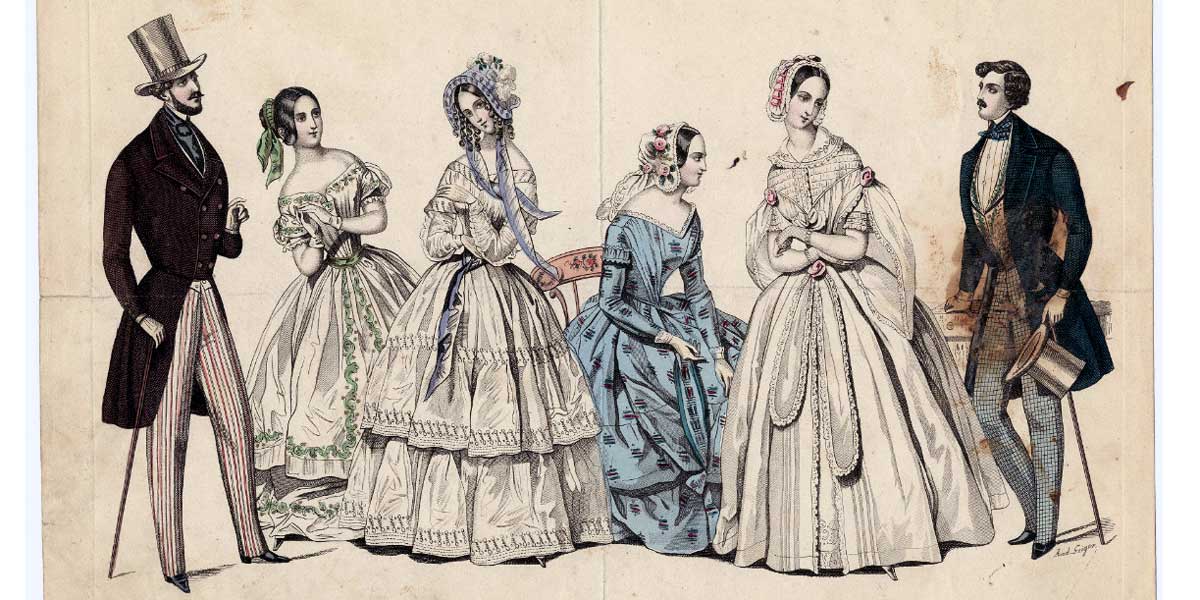
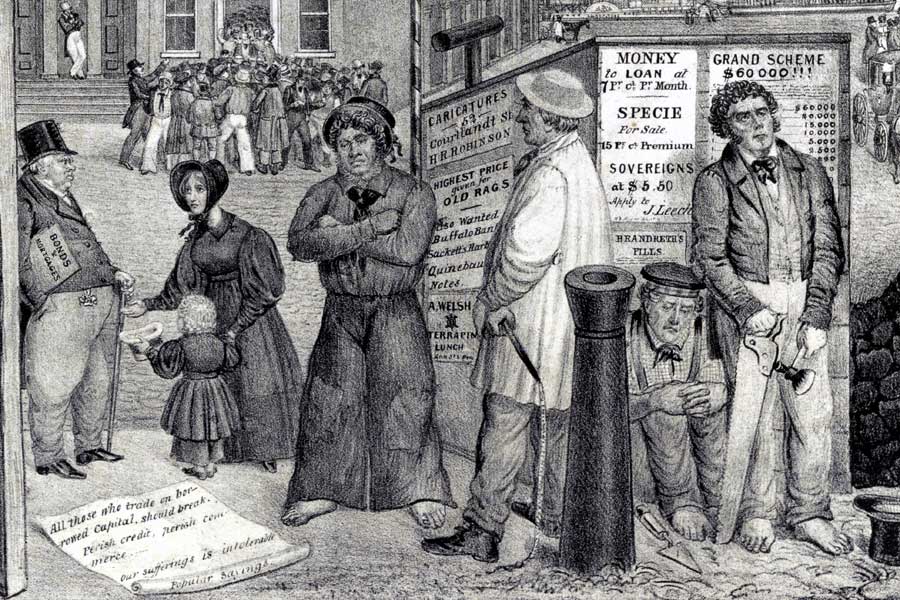
Pants
Trousers were now standard menswear, the breeches and pantaloons of the regency era now relegated to riding gear and military or ceremonial dress. Trousers of the 1840s were still slim fitting, in keeping with the silhouette of the decade. They were worn long often with an instep strap to maintain an elegant line for the fashion conscious gentleman. Trousers were now generally constructed with a single button fly at center front, however fall-front trousers were still available to buy in the 1840s and generally seen in fabrics fit for workwear. For workmen pants were looser and seen in lighter colors in durable fabrics.
Pants seen in photographs are generally dark or black, but the fashion plates of the 1840s also show bold stripes and checks in a variety of colors. The pants did not usually match the coat. However, it is around this time that the three piece suit is introduced. Suits consisting of matching trousers, vest and sack coat in black wool were being sold as "dittoes."" This may have been a working man's choice for Sunday best.
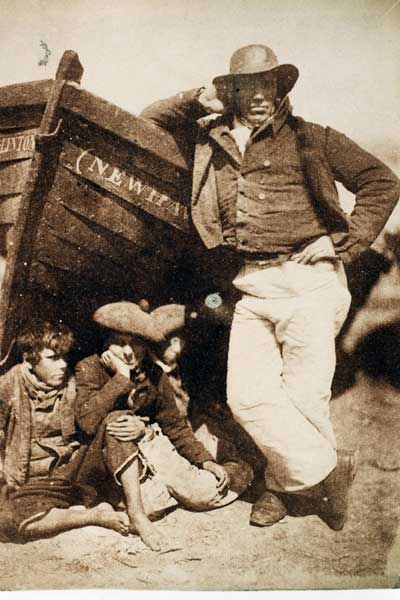
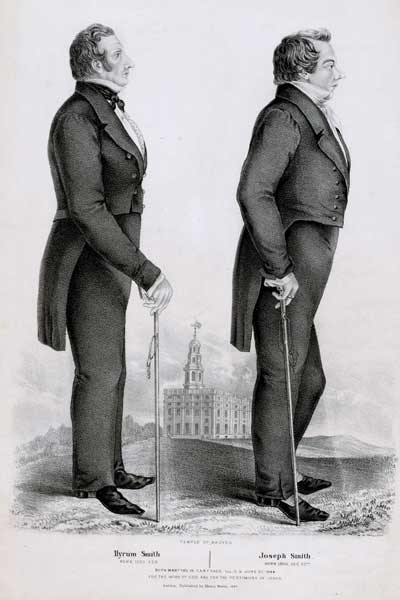
Evening Wear
Evening dress of the 1840s was becoming more clearly defined as we know it today. Gentlemen would have worn a black tailcoat over a white shirt and white waistcoat and white stock or cravat. A pair of black pants, black leather dress shoes and a black silk top hat completed the ensemble.
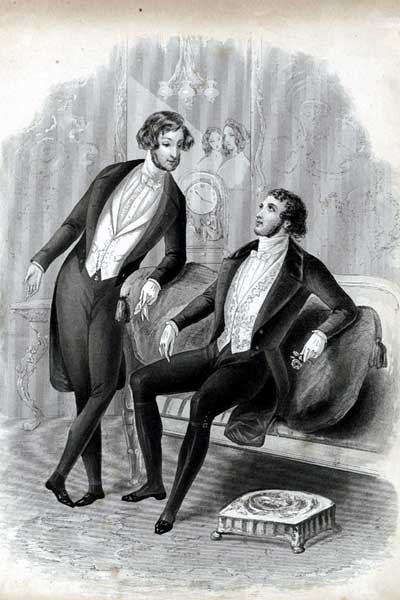
Hats
The top hat was a very popular style of hat for men in the 1840s. Coming in a variety of shapes, tapered or not, wide or narrow brimmed, it was now more commonly made from silk than beaver pelt, and usually a glossy black. Daguerreotype photographs show men wearing all kinds of other hats: derby style hats, wide awake hats, and peaked caps.
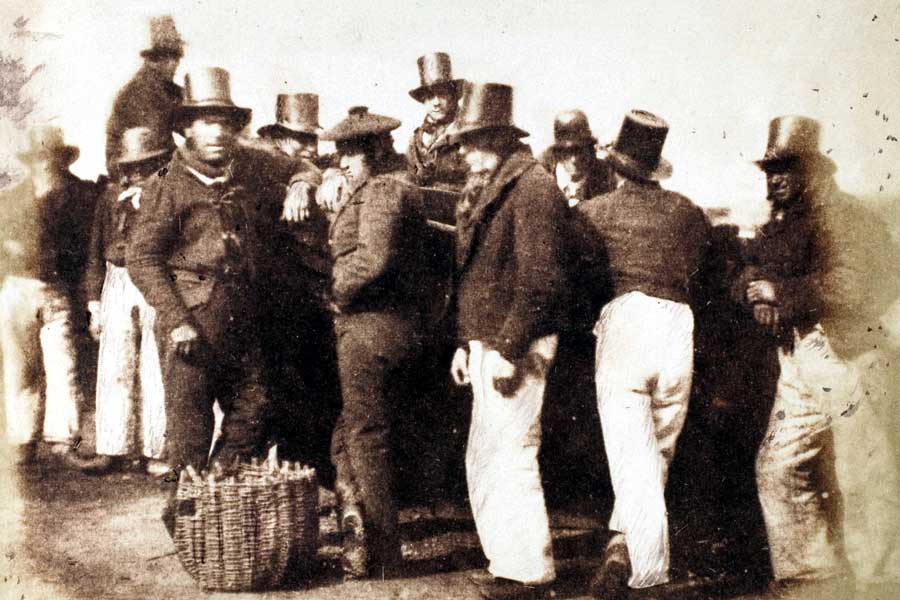
Footwear
By day men most often wore short boots, pull-on boots in black leather, most of which were covered by the long trouser legs. Longer boots were only now seen for riding, or for military dress. Toes were square and there was a low heel to the boot. For evening, slip on black leather dress pumps were worn.
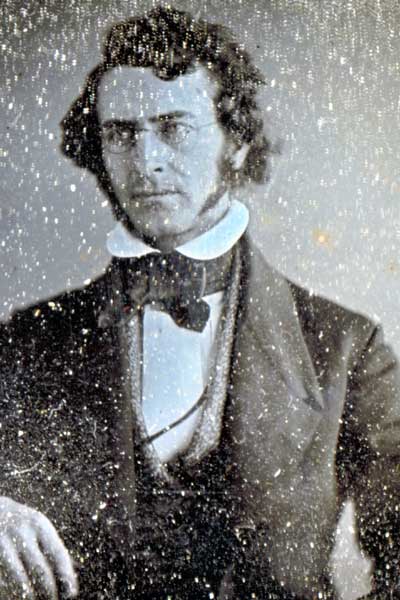
Hair & Accessories
The 1840s saw a change in men's hairstyles, from hair worn naturally with curls around the face to now be cut ear length and slicked down in a side parting. Moustaches were in fashion, along with a jaw framing beard style which was popular in the second half of the decade, and favoured by Prince Albert. A gentleman would also wear a watch, tucked into the left pocket of the waistcoat.
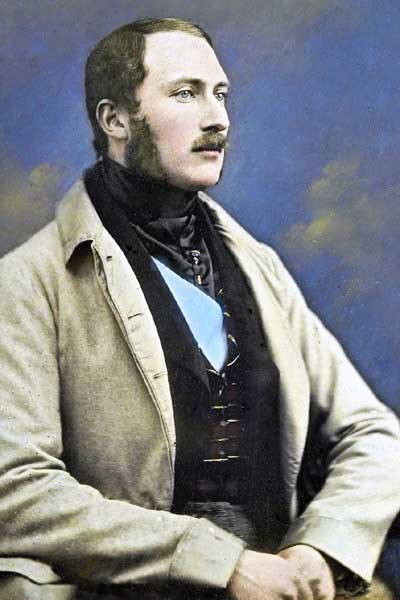
Q&A About 1840s Men's Fashion
What did men wear in the 1840s?
What did upper class men wear in the 1840s?
What did lower class men wear in the 1840s?
Complete Victorian Outfits
We offer a full line of men's period clothing which are suitable for movie and TV production, theatrical, living history and performing arts requirements, and are also perfect for vintage weddings!
All of the products we sell are sold individually, but we have put together these full outfits to showcase the elements of Regency style for your consideration and inspiration.
Click any image for a close-up and a list of the products shown.



